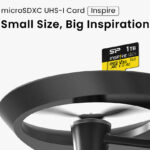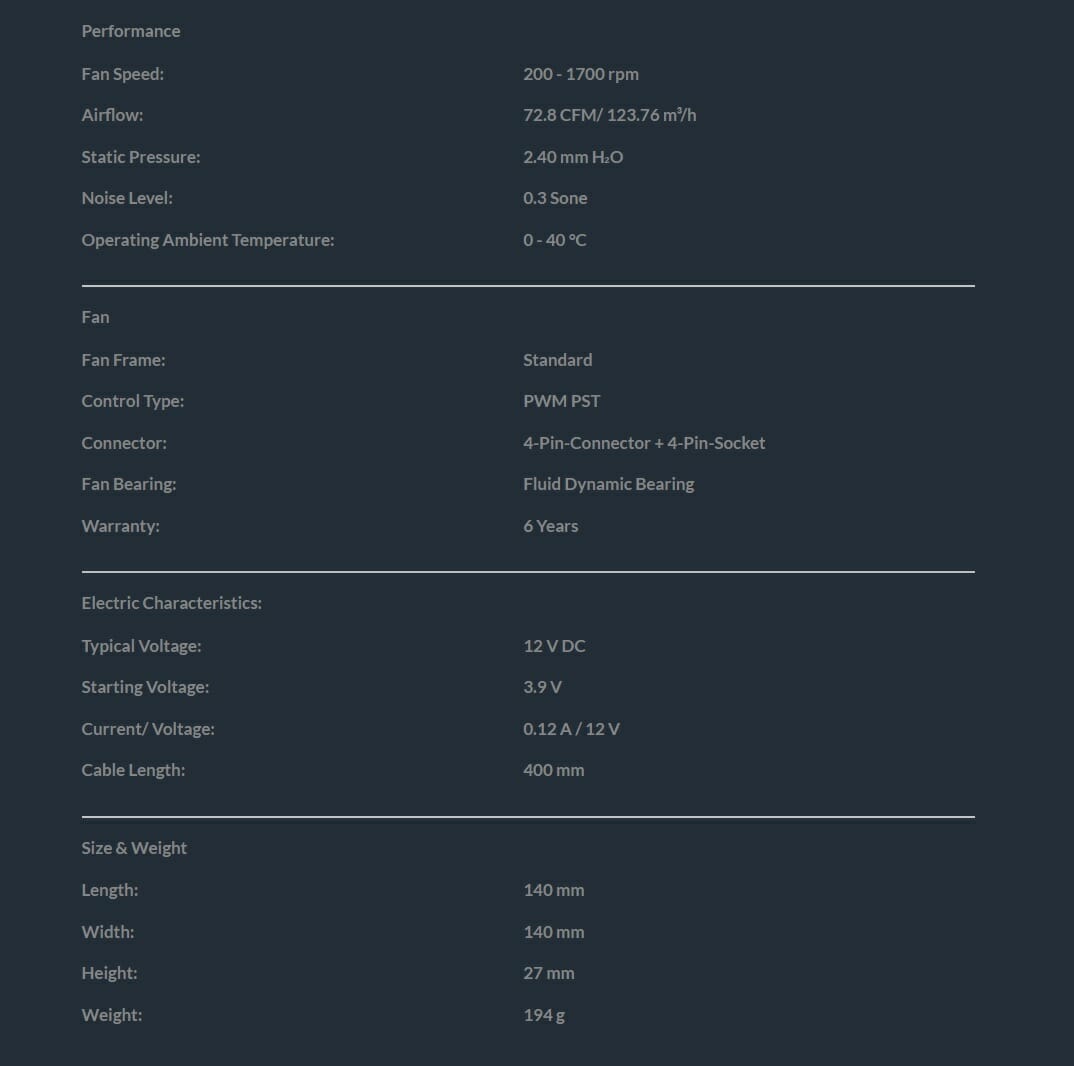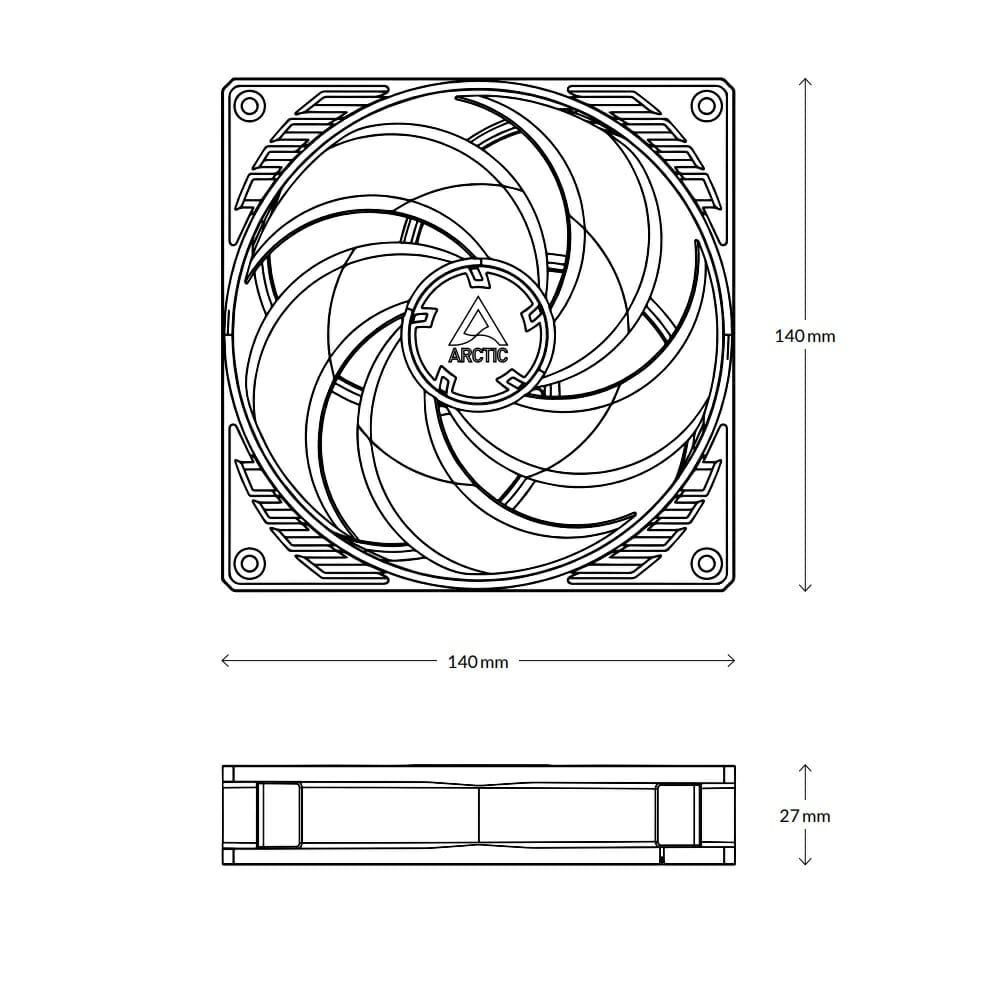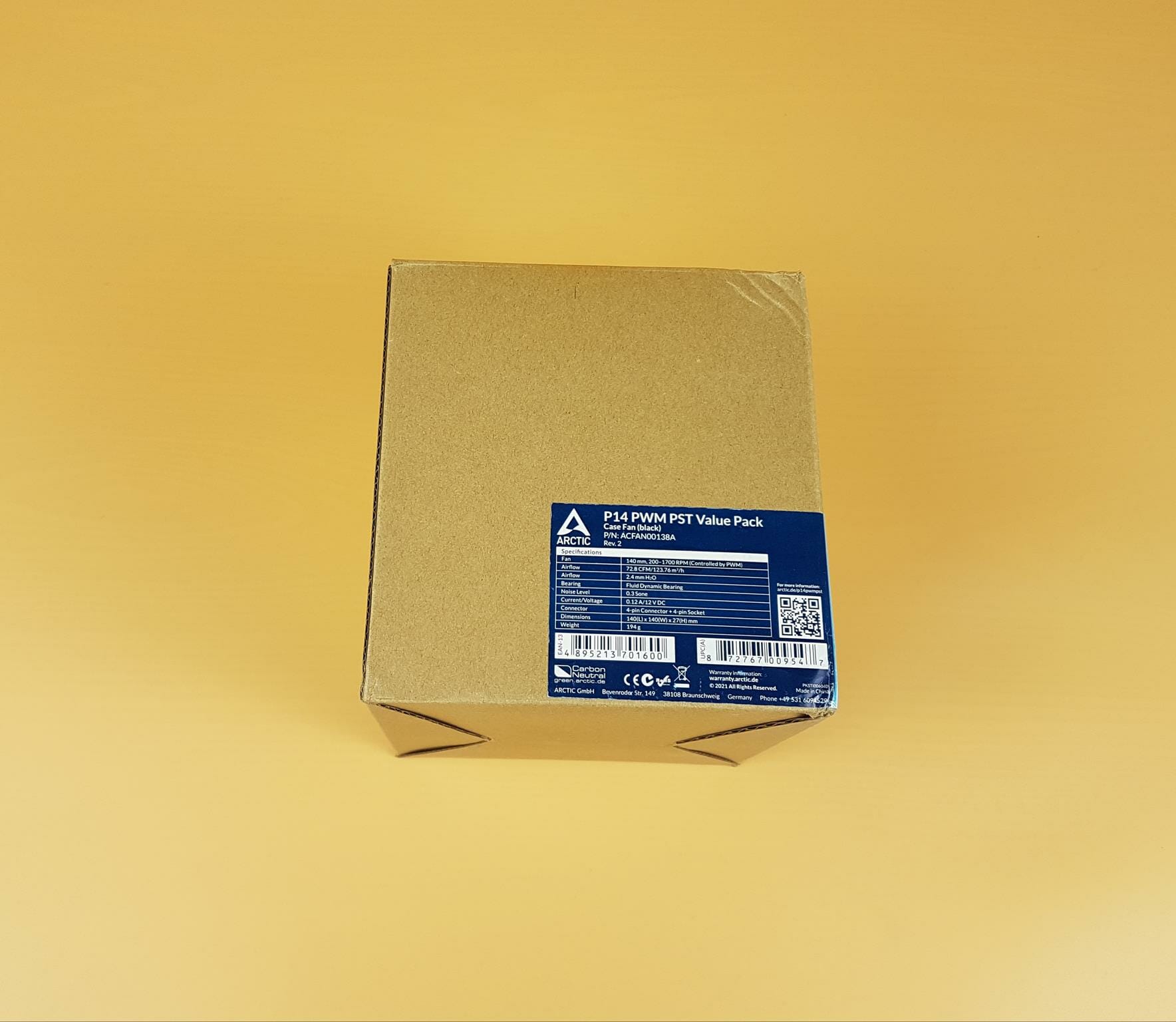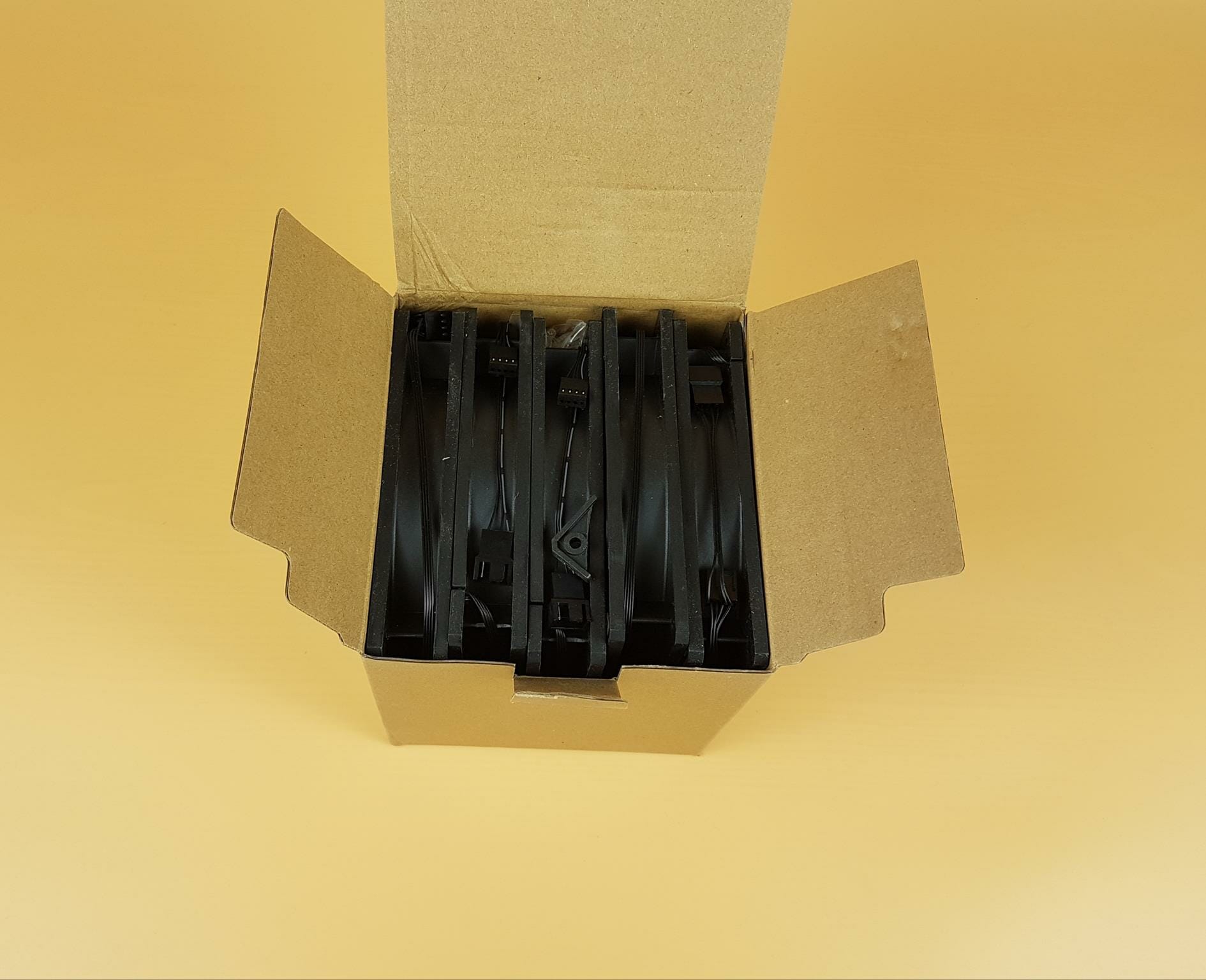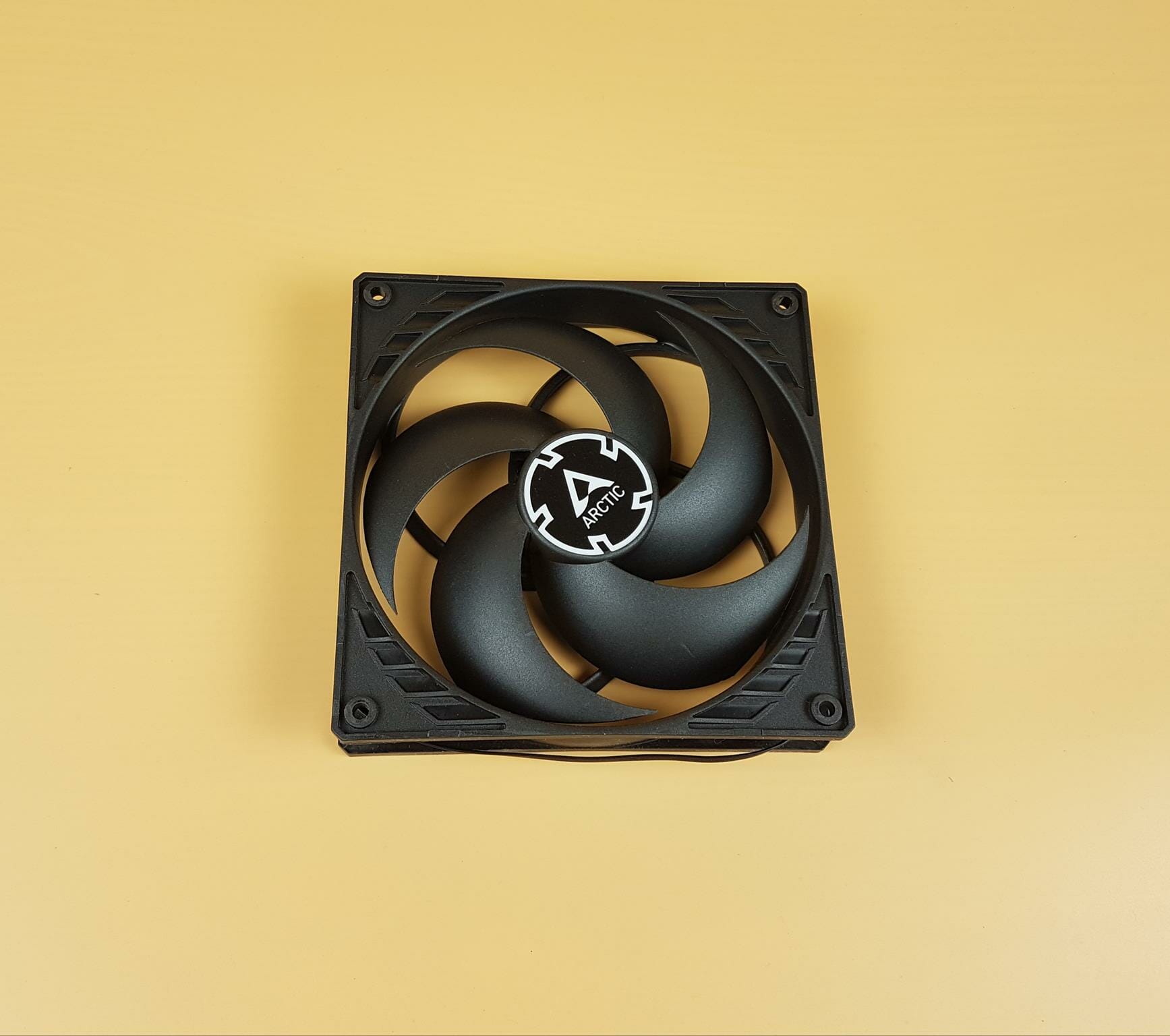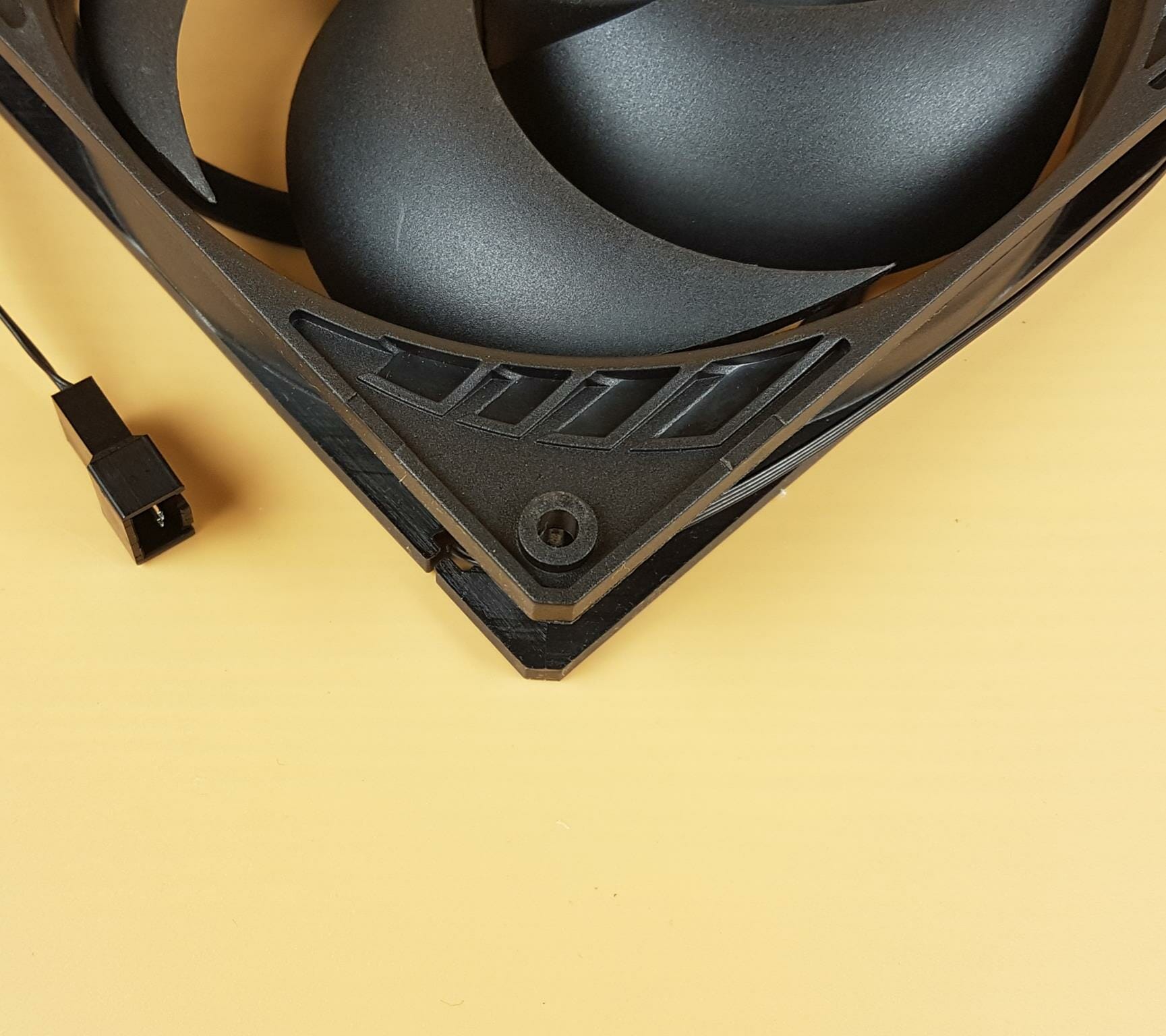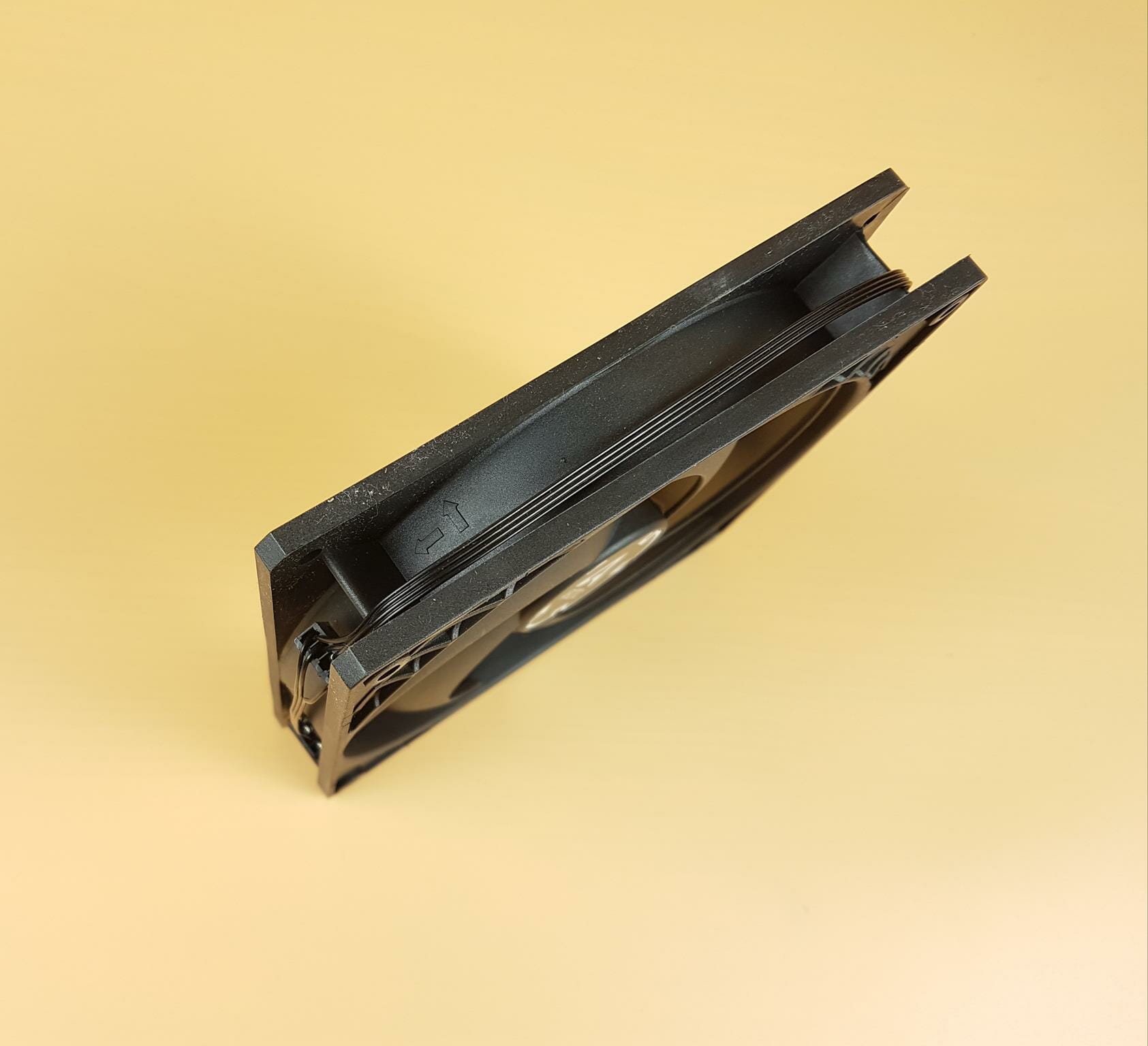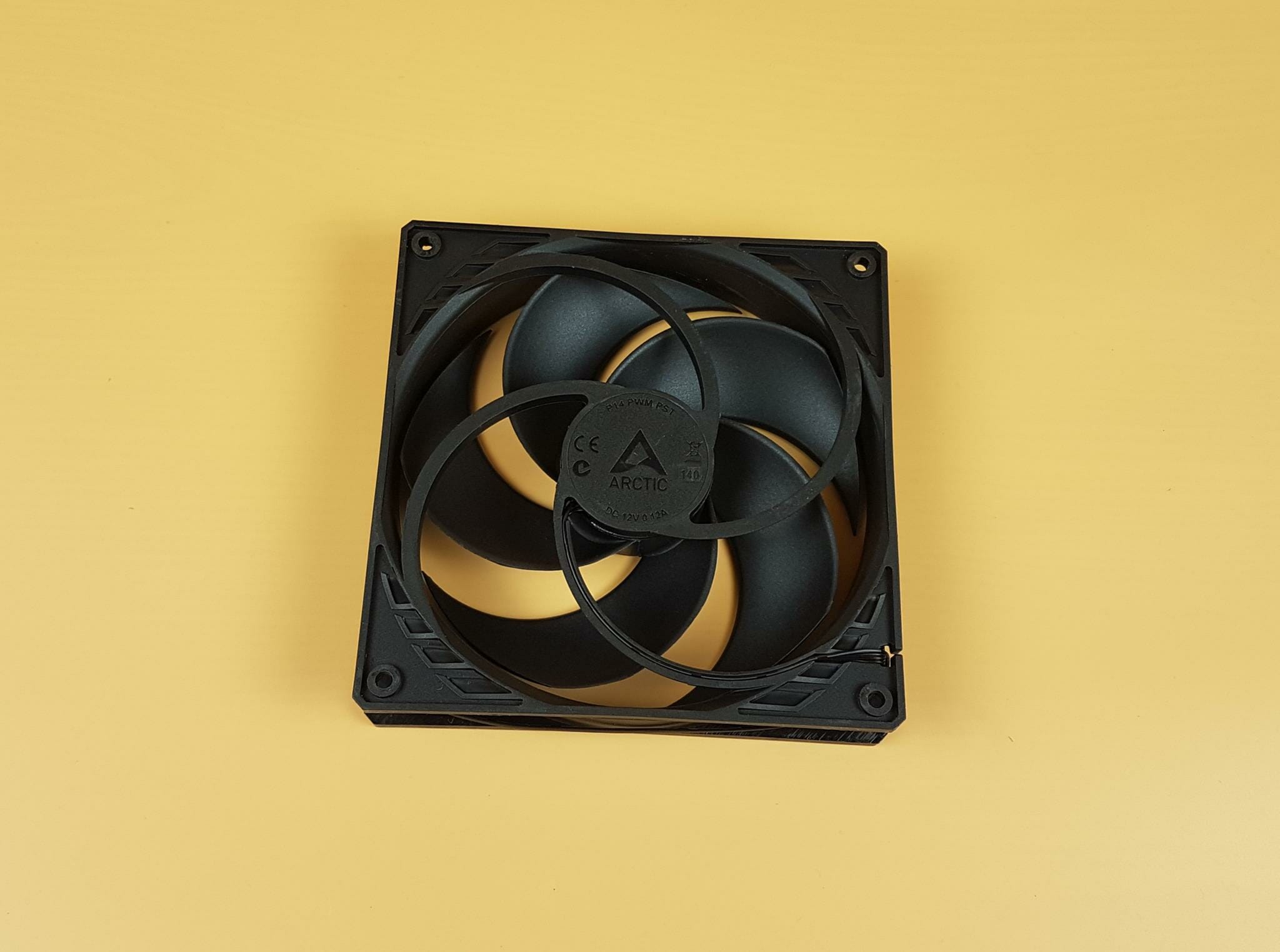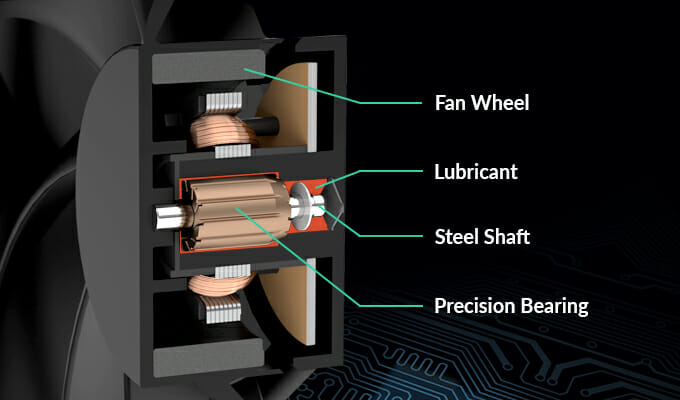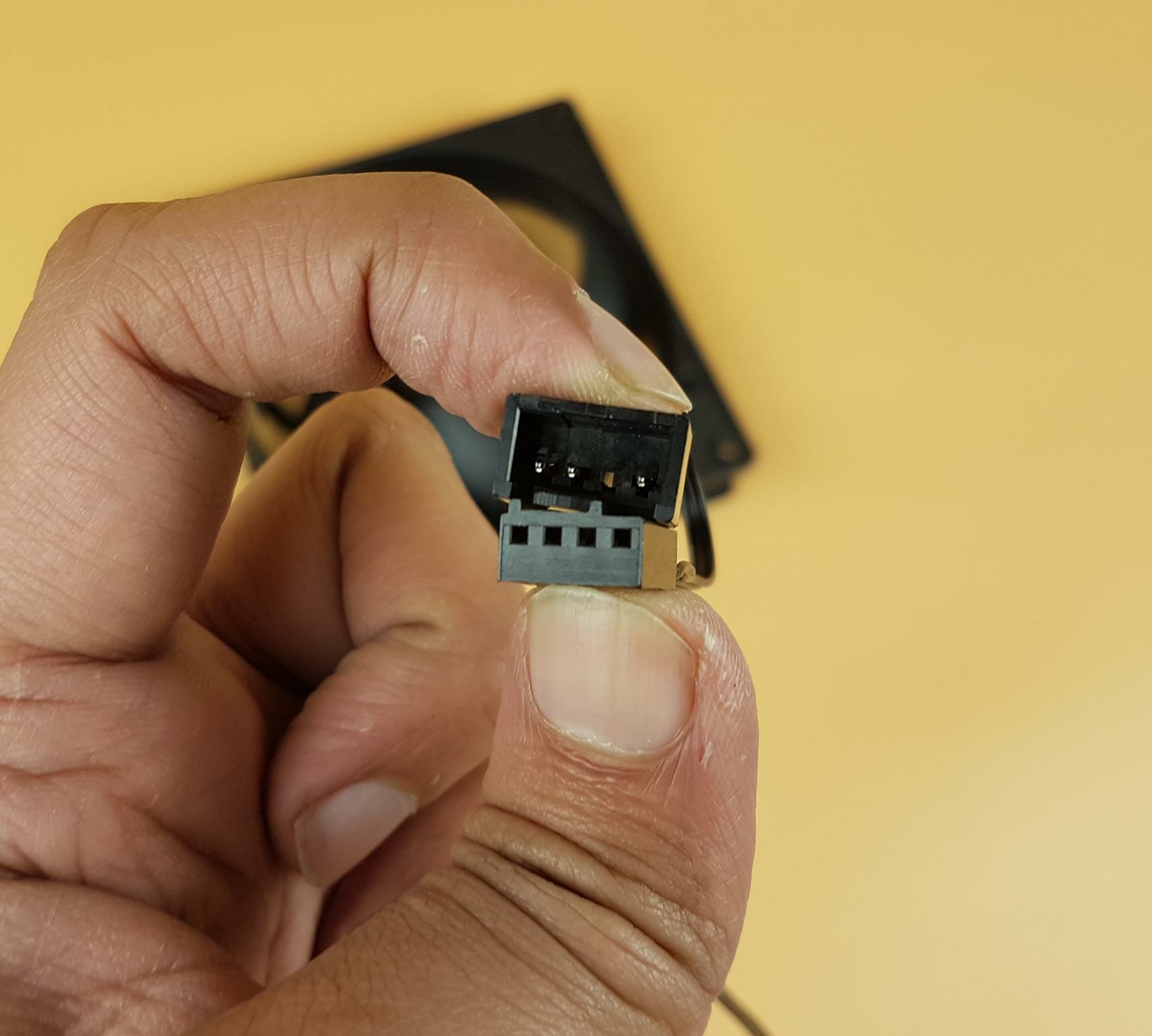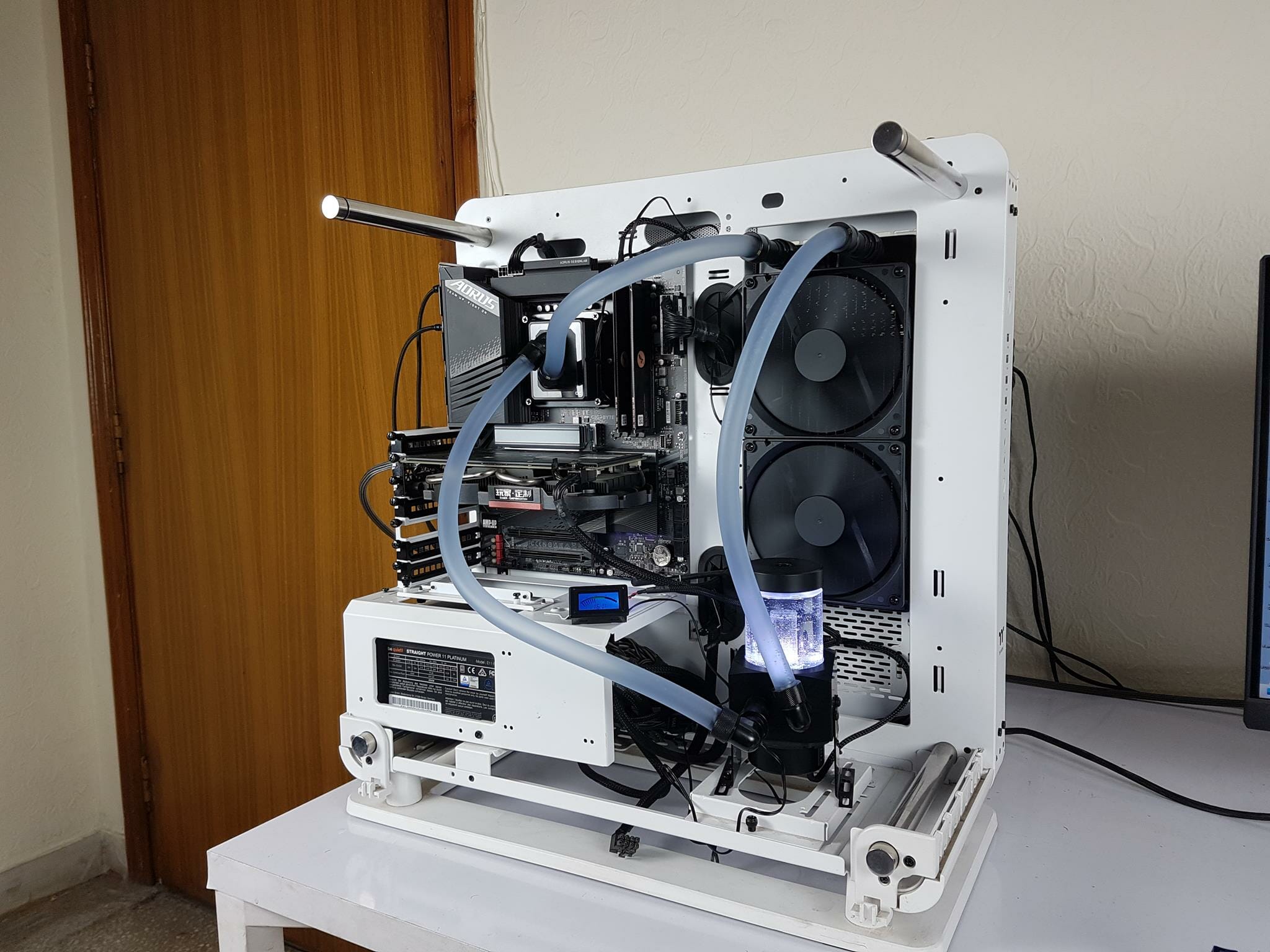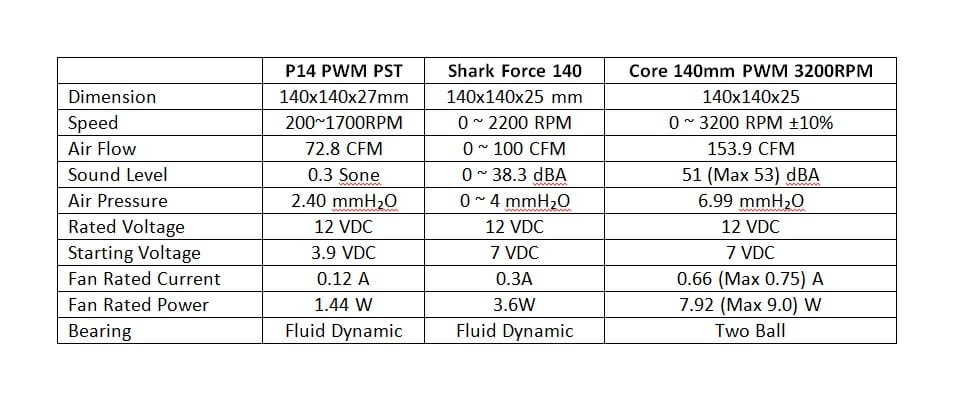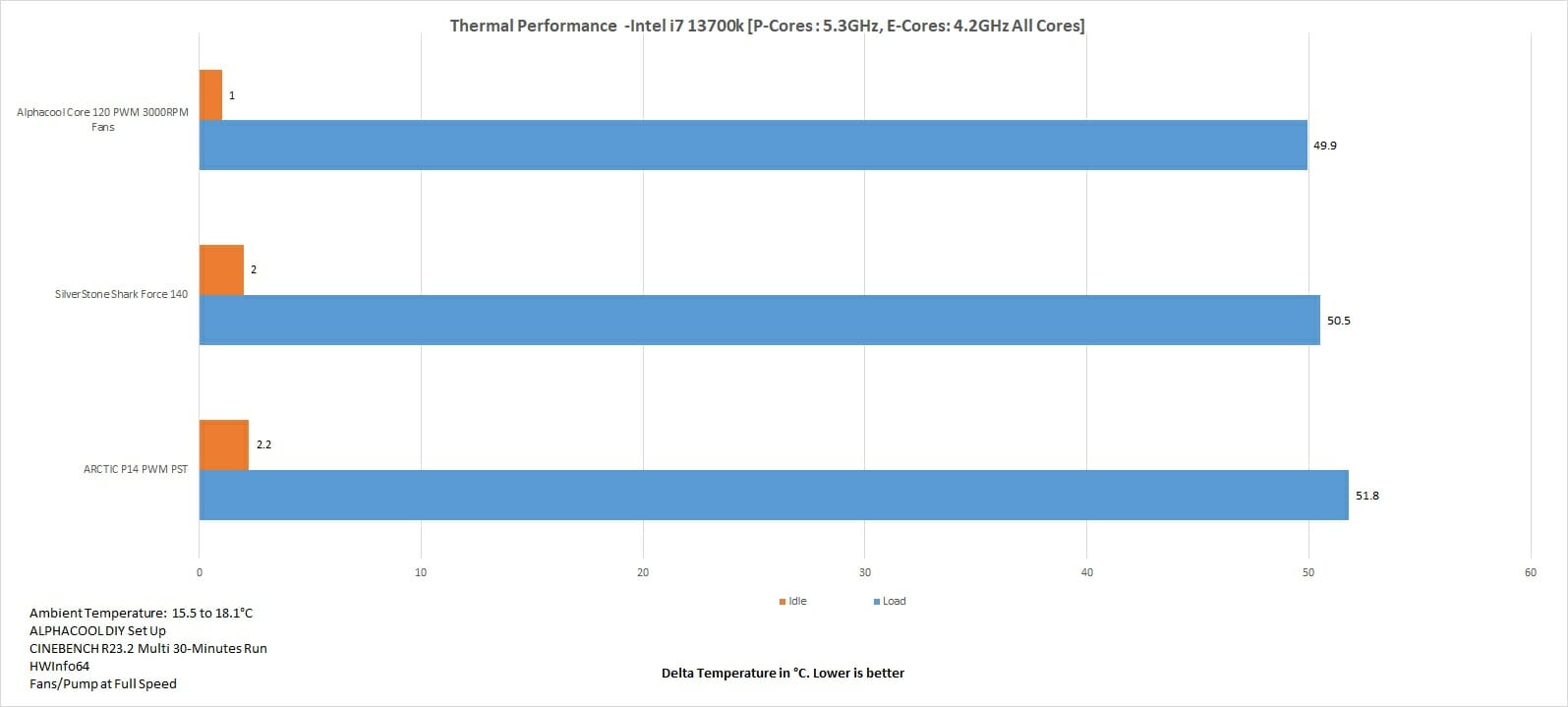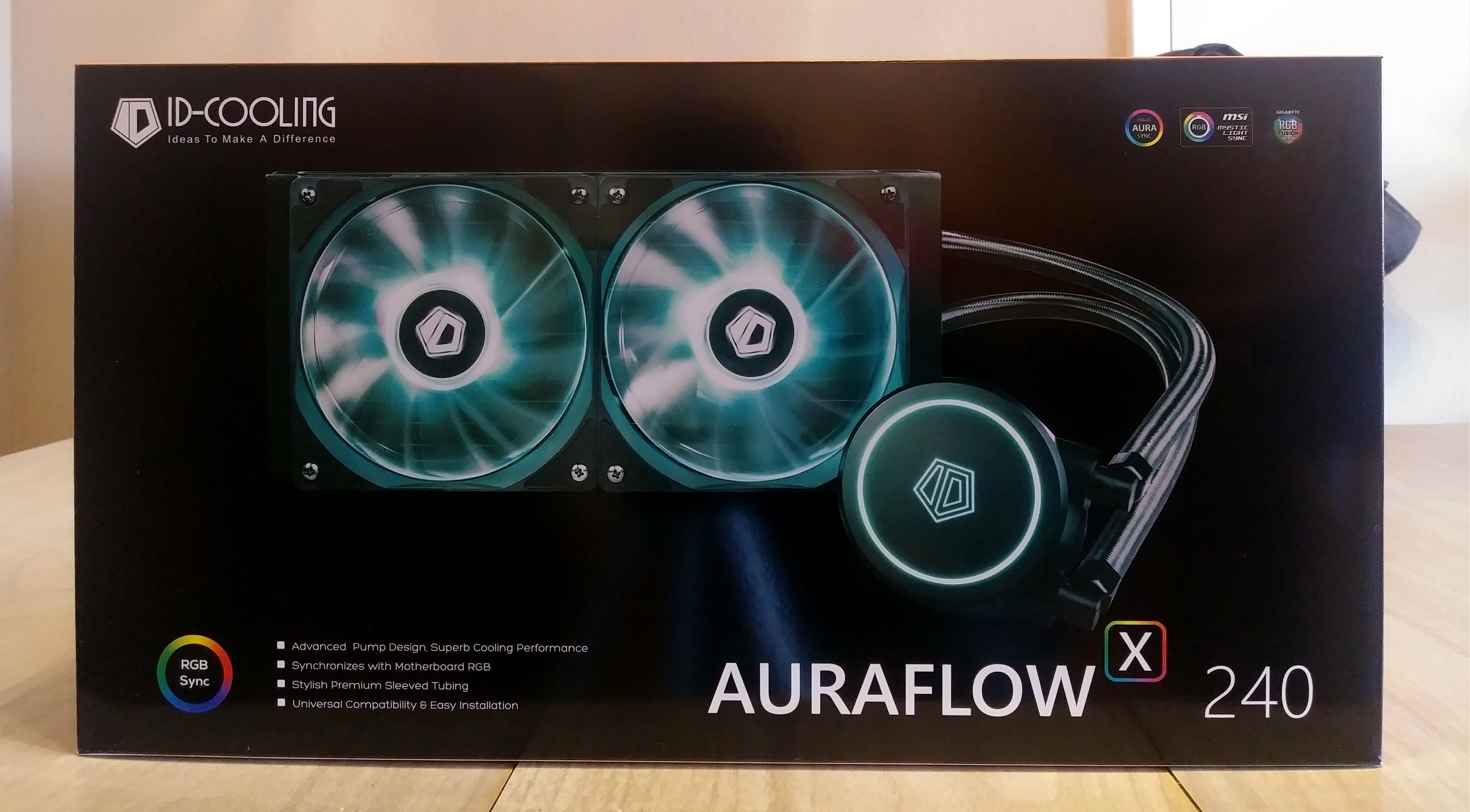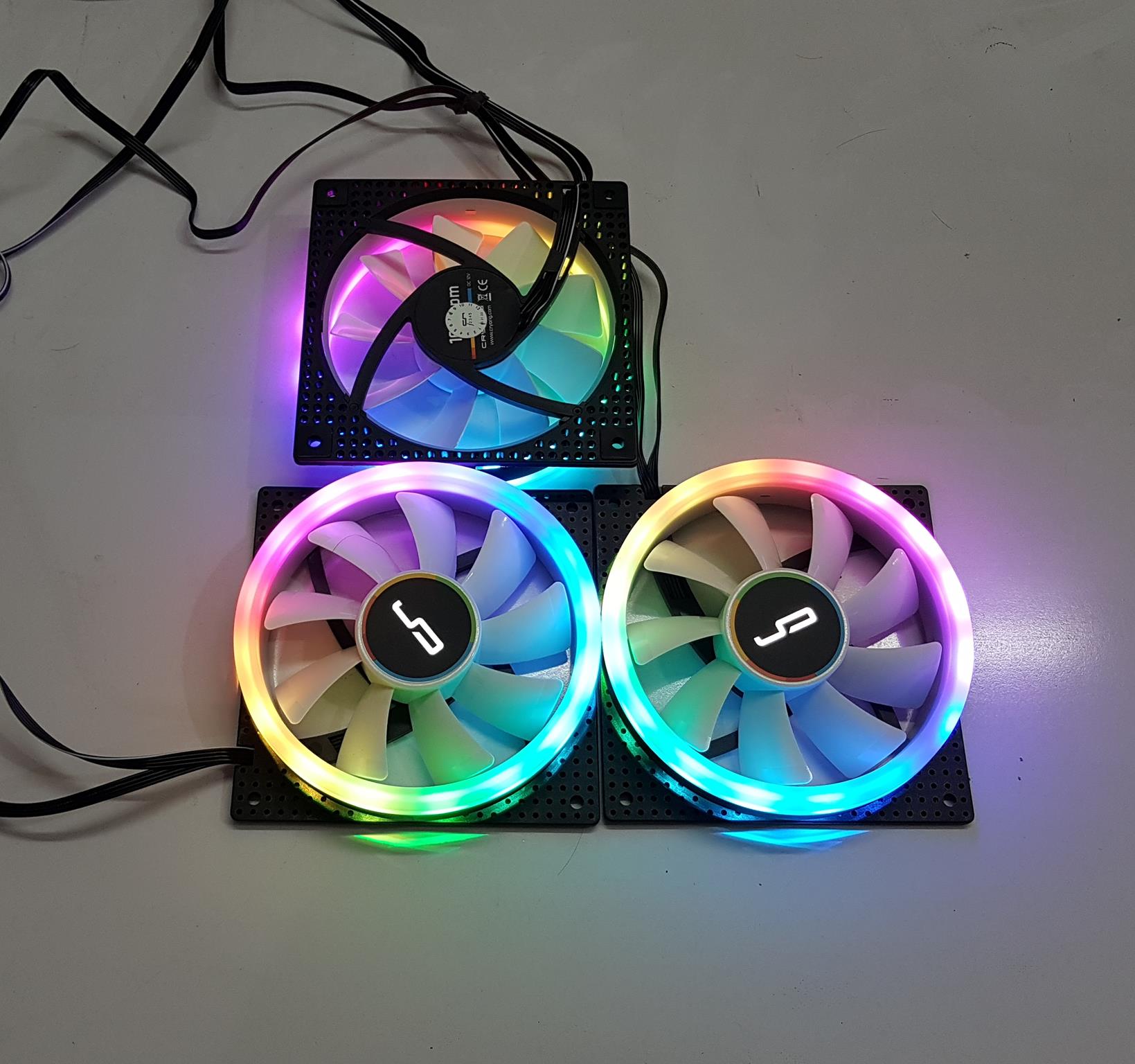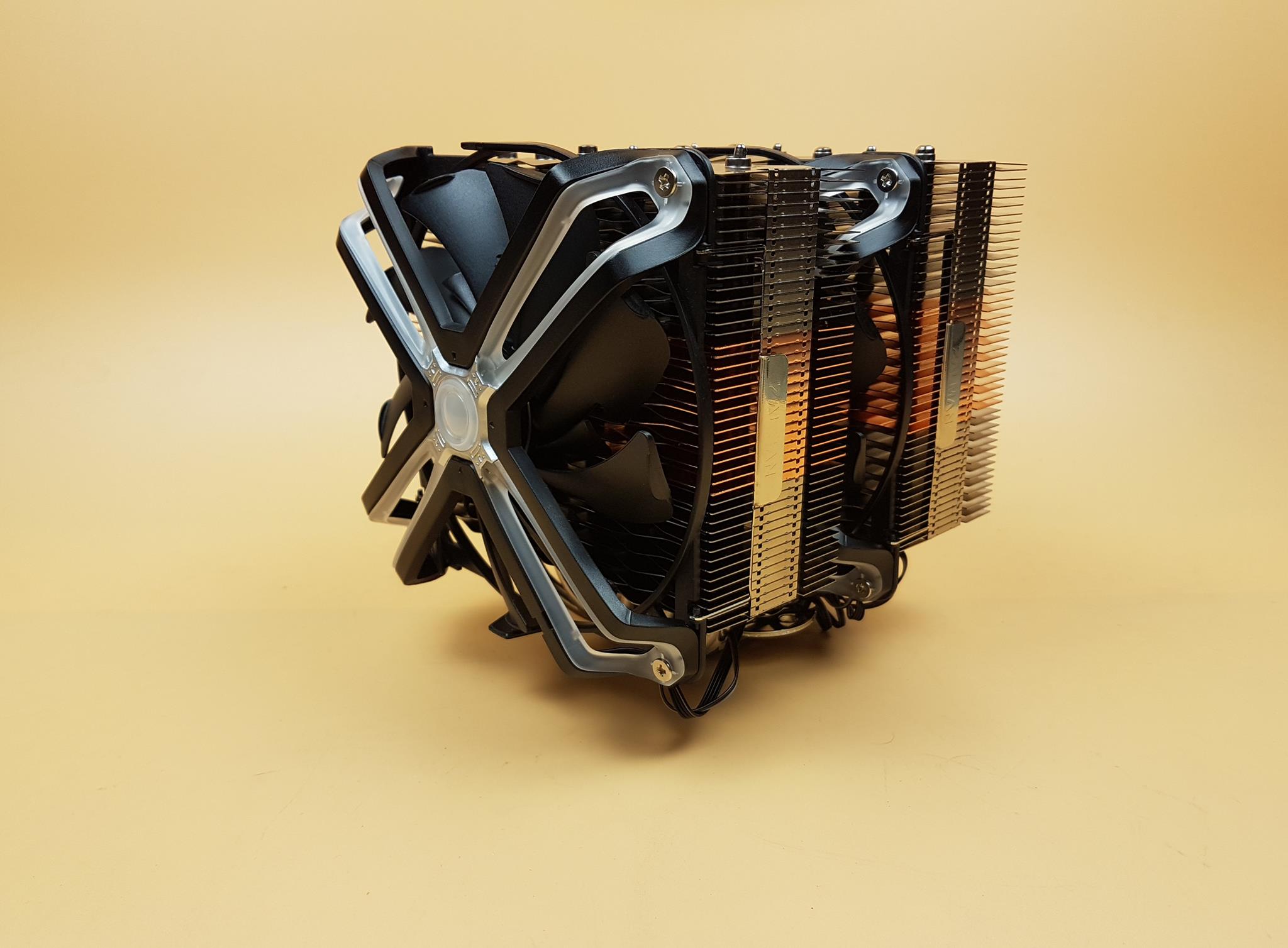
ARCTIC P14 PWM PST Fans Review
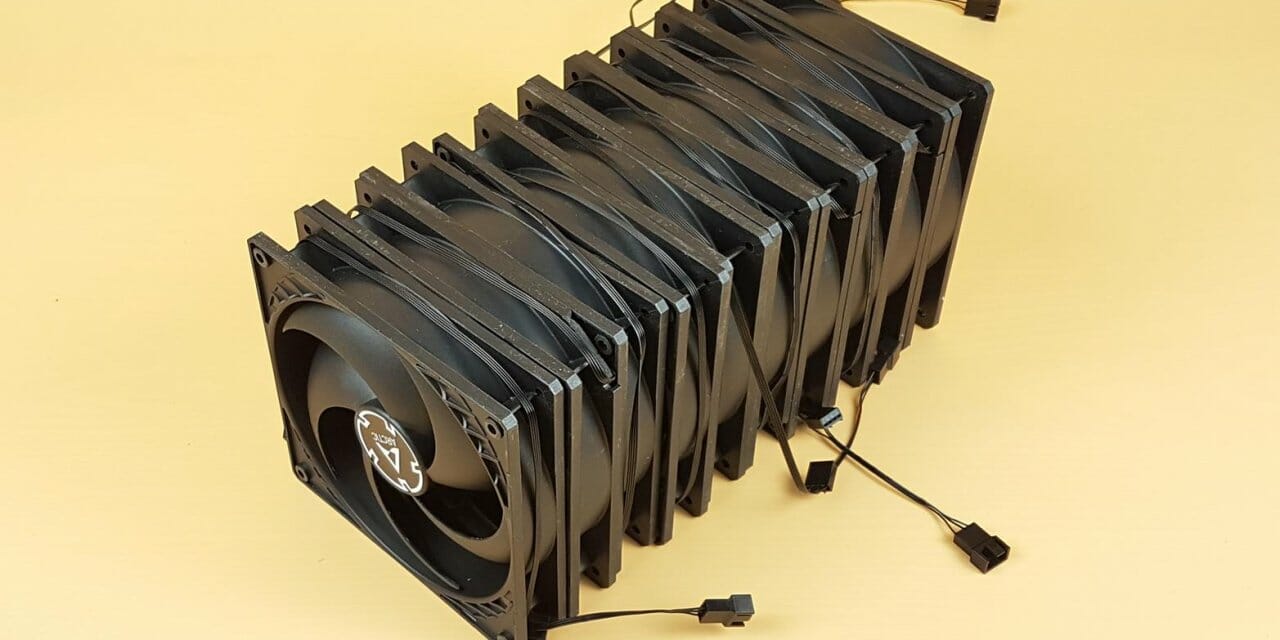
Introduction
We are doing a 140mm fan’s comparative performance testing on a gigantic radiator from ALPHACOOL named SuperNova having a size of 1260mm. We reached out to a few brands for the provision of 140mm size fans. ARCTIC has joined this content with their popular P14 PWM PST and P14 PWM PST Slim fans. We have already tested the ARCTIC P14 PWM PST Slim fans. This time we are doing a dedicated review of P14 PWM PST Fans.
Item: ARCTIC P14 PWM PST Value Pack of 5 Fans
Pricing: MSRP $€39.99 at the time of the Review
Specifications
Dimension
Packaging
ARCTIC is using minimalistic packaging for these fans. A pack of 5x fans is shipped inside a cardboard box. There is a blue color label having a title of P14 PWM PST Value Pack. ACFAN00138A is a part number. Their website is listing the products based on part numbers in the URL. These fans are rated for a maximum of 1700RPM while generating airflow of 72.8 CFM at 2.4mmH₂O static pressure.
There is a scanning label over here. Scanning it with the right app on your phone will load the webpage of the product from the ARCTC website.
Opening the box will show all 5 fans stacked vertically. Oopsss! One fan has a broken mounting corner.
ARCTIC has provided 20x self-tapping screws in silver color.
Closer Look
Let’s take a closer look at these fans.
Each fan has a dimension of 140x140x27mm. These fans have a 27mm height compared to the 25mm standard height of the majority of the fans. The complete assembly is black in color. There is a stylish ARCTIC branded sticker on the center. These fans have 5x blades in a special layout. There are insets near the inner frame coming from the mounting corners. It seems like the tips of the blades sit closer to the frame however, there is still a gap between the tips and the frame. Each fan weighs 194gm.
There is no ant-vibration pad on any mounting corner. The mounting corners have a recessed area compared to the mounting holes.
We have a standard black color frame for the fan. The frame is quite sturdy. There are two arrow indicators located towards a mounting corner. These are there to identify the direction in which blades spin and the direction of airflow through the fans.
There is a 4-arms assembly on the backside holding the fan motor and blades to the frame. Pay attention to the orientation of these 4 arms. They are in a spiral direction as well opposite to the direction of the blades. There is no sticker on the center. Instead, the power rating of the fan and other data are carved on the frame.
These fans are using Fluid Dynamic Bearings. According to ARCTIC, a combination of alloy/lubricant which is developed in Germany is used to reduce the friction within the bearing. This in turn would generate less heat and improves efficiency. This will increase the service life of the fans. ARCTIC has also mentioned that their newly developed fan motor has a low noise output even at full speed. It is also stated that the new motor produces no startup jerk and less commutation vibration. This is the reason we don’t see any anti-vibration pads on the mounting corners.
These fans feature a flat cable. Each cable is terminating at a 4-pin PWM connector and a 3-pin socket. This is what ARCTIC refers to as PST (PWM Sharing Technology). These connectors allow an easy daisy chaining of the ARCTIC fans for single-source control.
The salient specifications are:
| Size | 140x140x27mm |
| Speed | 200~1700 RPM |
| Air Flow | 72.8 CFM |
| Static Pressure | 2.40 mmH₂O |
| Noise Level | 0.3 Sone |
| Operating Voltage | 12VDC |
| Starting Voltage | 3.9VDC |
| Current | 0.12A |
| Power | 1.44W |
Thermal Testing
We have used the below-mentioned configuration for this testing:
- Intel i7 13700k
- GIGABYTE Z790 AORUS ELITE AX
- DIY Setup
- Sabrent Rocket DDR5 2x16GB @ 4800MHz CL40 kit
- Colorful GeForce GTX 1050Ti 4G [For Display]
- Sabrent Rocket 4 Plus 2TB NVMe SSD
- be quiet! Straight Power 11 850W Platinum PSU
- Thermaltake Core P6 TG Snow Edition converted into an open-frame layout
Following DIY setup is used:
- ALPHACOOL Eisblock XPX PRO AURORA Digital RGB – Full Brass Black
- ALPHACOOL Core 100 AURORA Acetal/Acrylic with D5/VPP Pump
- ALPHACOOL HF Clear Tube 16/10mm
- ALPHACOOL NexXxos HPE-30 280mm Full Copper Radiator
- ALPHACOOL 90° Rotary 16/10mm Fittings
- ALPHACOOL Quick-Release Fittings
Here is the settings table for testing:
| P-Cores Clock (MHz) | 5300 All Cores |
| E-Cores Clock (MHz) | 4200 All Cores |
| Voltage (V) | 1.260 |
| Turbo Boost | Disabled |
| C-States | Disabled |
| Speed Step | Disabled |
| Thermal Paste | ALPHACOOL Sub-Zero |
| Thermal Paste Application | Dot Method in the center. |
| Test Run Time | 30 minutes |
| Idle Time | 10 minutes |
| Fan Speed | 100% PWM Duty Cycle |
| Pump Speed | Full speed |
| Header | CPU_Fan/Pump headers |
| Stress Software | CINEBENCH R23.2 |
| Monitoring Software | HWInfo64 |
Before we move on to the results, let me write a few lines on the new platforms from both camps. We have seen AMD AM5 and Intel Raptor Lake S CPUs taking more power and this time both sides have aimed at reaching the maximum clocks regardless of thermal limit. In fact, they run into thermal limits right away depending on the cooling solution and the clocks being used. This has made testing of CPU coolers challenging because viewers/readers are not used to a new nomenclature which is what clocks are sustained under a given load using a particular cooler. That is if the cooler is capable of providing enough cooling head to sustain the high frequencies. Traditionally we are used to going the other way around which is which cooler is better in terms of thermal capacity. Despite this, we are using temperatures as a base for measuring this unit.
The testing is done on an open-air bench system. Once inside the chassis, the temperatures are expected to rise and would largely depend upon the optimal airflow inside the chassis. Let’s take a look at the results. This test was done using Intel’s default settings with power limits imposed. The CPU was drawing roughly 225W power so this is a 220W domain result.
For comparison, we have ALPHACOOL Core 140mm PWM 3200RPM Fan in the graph. Below is a specifications comparison:
Result
Compared to SilverStone and ALPHACOOL fans, ARCTIC fan has mediocre but still good enough specifications. This is exactly what we are seeing on the graph. Despite sitting on the bottom with a difference of only 1.9°C compared to the top slot fan, these fans have a significant advantage of having better acoustic performance compared to the other two fans. We recorded approximately 48 dB(A) sound output on ARCTIC fans running at full speed at an ambient of 32~33 dB(A) sound level.
Conclusion
The ARCTIC P14 PWM PST fans are 140mm size fans that are the backbone of ARCTIC’s most famous Liquid Freezer – II 280 and 420mm version liquid coolers. ARCTIC is known to make powerful yet balanced spec products and the P14 also fits that criterion. Rather they fit that criterion with some style. We will come to this point shortly. These fans are available as a single fan pack and a value of 5 fans. The dimension of these fans is 140x140x27mm. These fans have a thickness or a height of 27mm. Usually, 140mm size fans have a gap of 125mm between any two mounting holes on a side.
Each fan has 5 blades in a similar spiral layout as we have seen on the P14 slim series fans. The complete assembly is in black color. The frame is sturdy. There are two arrow indicators that would be helpful for novice users to identify the direction in which blades will spin and the direction of airflow through the fan. These fans are rated for up to 1700 RPM starting from 200 RPM. The starting voltage is 3.9VDC. This fan draws 1.14W using 0.12A at 12VDC. The airflow rating is 72.8 CFM with a static pressure rating of 2.40mmH₂O at 12VDC.
These fans feature Dynamic Fluid Bearings and their newly designed fan motor which is mentioned to be producing less computational vibration. This is why there is no anti-vibration pad on any mounting corner as the motor does not produce any jerk. It is also mentioned that the motor produces less heat which enhances the life of the fan.
ARCTIC has provided 20x silver color self-tapping screws in the box. Two of the fans came damaged with their mounting corners broken. This is probably done during shipping but I am not sure of a probable cause either. These fans feature PST technology or terminology. It stands for PWM Sharing Technology. Ides is simple. ARCTIC has provided a 4-pin PWM connector and a 3-pin socket per fan on a flat cable. This allows the users to daisy-chain these fans easily and controls the connected fans from a single source.
The ARCTIC P14 SLIM PWM PST is a value pack of 5 fans having an MSRP of $39.99. ARCTIC is providing a 6-year warranty on these fans. We have pitched these fans against the SilverStone Shark Force 140 and ALPHACOOL Core 140mm PWM 3200RPM fans. Those fans have high-end specifications compared to ARCTIC P14 fans. Despite that, ARCTIC fans have performed quite well with an overall difference of 1.9°C but offering an impressive noise output and consuming much lower power. These fans come recommended by us.
Thanks to ARCTIC for the provision of these fans.












